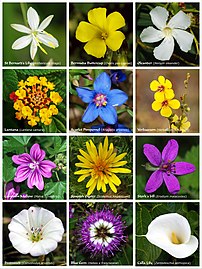Spring has sprung—well, sort of—well, at least we had a couple of sunny days last week—um, until it snowed on Sunday... Anyway, the hint of warmer weather means hands are itching to start digging in the dirt. My stepmother was a landscape designer so, despite my total lack of a green thumb, I have had close encounters with the obsessive nature of gardening aficionados.
Nothing will stop the true gardener. But some of your clients might find that pain keeps them from enjoying this pastime to the fullest. Weeding, hoeing, raking, digging, and seeding all involve repetitive motions and put strain on various muscles and joints,
Warm Up, Stay Loose, and Enjoy the Dirt
Here are a few tips for pain-free gardening that you can pass along to your clients:
- Before you hit the dirt, warm up. Gardening is exercise. You'd warm up your muscles before you do cardio work at the gym—same goes for gardening. It doesn't have to be much—walking around the block a couple of times will get your blood moving and your muscles ready for work.
- When you're shoveling or digging, keep the shovel and your load close to your body, just like you would (should) when you're lifting a heavy box.
Keep your wrists in a neutral position (not overly extended or flexed for long periods) and as relaxed as possible. Tools like the ones at the right will help keep your wrists in the proper alignment.
- Instead of bending over at the waist, squat or kneel if you have good knees. If your knees aren't so great, use a gardening bench or stool. And if your knees are in good shape, keep them that way by using a kneeling pad.
- When you're watering, carry smaller loads and hold them close to your body, with a bent elbow.
- Try tools with extended handles to minimize bending and kneeling.
- Pause frequently for mini-stretch breaks.
Ergonomics is the science of designing tools and environments to fit the body, rather than the other way around. In the past several years, "ergonomic" has become a buzzword, and companies often label items with the term for marketing purposes. Before you spend a bunch of money on ergonomic tools, use the KISS (that's Keep It Simple, uh, Sweetie) principle:
- If it doesn't feel right, it's not right for you. That's kind of a big "duh," but it's easy to be misled by ergonomic claims, flowery descriptions, and even "impartial" reviews.
- If it feels heavy when you try it out, it'll get heavier with repetitive use.
- A lot of so-called ergonomic stuff pretends to be ergonomic by just slapping on a larger, supposedly one-size-fits-all grip. Hands come in different sizes; so should ergonomic tools. If the grip feels in any way uncomfortable at first, it'll just get more uncomfortable with use.
Earth laughs in flowers. ~Ralph Waldo Emerson

No comments:
Post a Comment